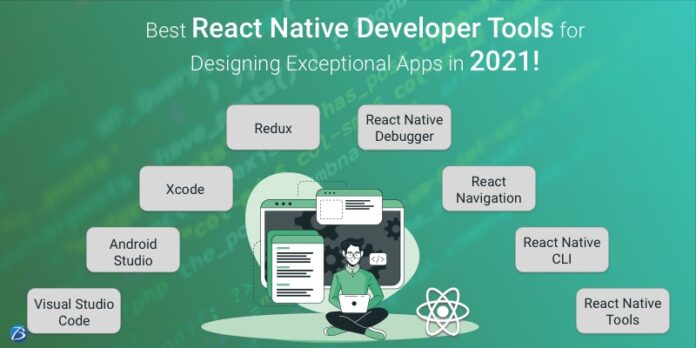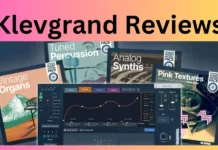React Native is among the most popular and loved frameworks to develop mobile apps. There are many reasons for this! First of all, React Native enables cross-platform app development. The code is extremely reusable across Android and iOS platforms. Furthermore, React Native projects are efficient in terms of cost and the final product are able to be launched much quicker when compared to other alternatives.
Additionally the learning curve for React Native is much lower than other frameworks. The speed, budget-friendly and easy development – What more could developers of apps want? In addition to these advantages to the mix, React Native offers React Native ecosystem also offers many useful tools and IDEs to make the development of apps a breeze. This article focuses on the features of the top React Native developer tools that can be a major factor in saving time and energy of developers.
1. Top React Native Developer Tools
Redux
Redux is a no-cost JavaScript-based tool to aid in UI creation and management of state within React Native or React applications. Redux also aids developers in the capabilities of live editing code as well as time-traveling debugging and testing of apps.
Redux is a tiny utility that contains dependencies and is simple to test. With a file size of less than 2KB, the tool works well with view libraries, including React. Redux can operate with various settings for development, such as front-end, back-endand native platforms, etc.
Redux helps when managing the data of large-scale and complex React Native applications. React apps save information in the local state and transfer this information from the parent component to child components by using props (properties). In bigger apps the architecture is difficult to manage. This is where Redux becomes a factor.
2. Learn more about the flow of data mechanism in Redux.
1. State:
The app’s “State” can be described as an object tree that is contained in a single store. “The “State” represents the only source of truth that powers the application and defines the app’s state at any point in time. However, this “State” is only read-only, and the only method to alter it is via “Actions”.
2. Actions:
“Actions” refers to the actions that happen within an application as a result of input from users. The “Actions” transmit payload information through the application to the retailer. “Actions” constitute the only source of information to the store. If the state requires changes that are required, they will be implemented via “Actions.”
3. Reducers:
“Reducers” are functions that make modifications in”the “State.” When an event is triggered to trigger a state changes, “Reducers” make the necessary changes to the prior “State” returning the current “State” using the new value.
3. Store:
The “Store” holds the states of an application. Be sure to only use one “Store” across the entire application if you’re making use of Redux because the idea of having multiple stores isn’t a good idea here.
components The Components are the user interface of the application. A clear account of the user’s interface that is based on the current “State” is referred to as”View” “View”. The application renders the UI in its “State.” Therefore, the UI is refreshed every time there is a new “State” is created.
3. Android Studio
Android Studio can be described as an IDE (Integrated Development Environment) that is based on Java and Intellij IDEA. It comes with the React Native developers instruments that work with using the Android OS along with code editing tools.
Android Studio’s main offerings include a powerful database inspector, a visual layout editor and smart code editor, an adaptable build system, APK analyzer, real-time profilers, and more. It is also compatible with Kotlin DSL in the Android Gradle plugin and allows users to run an Android emulator running within Android Studio. Android Studio.
This tool is extremely helpful to edit code and aids the React Native developer with code creation as well as analysis and refraction. It uses the feature called “instant Push” to push the code and making necessary adjustments while the application is running.
React Native apps developed using Android Studio has one or more modalities, along with sources of the code as well as resource files. The modalities have a range of modules like Library module, Android apps modules and Google App Engine modules.
4. Xcode
Xcode is an Apple-designed IDE and code editor that was designed to assist in the creation of iOS mobile applications, desktop applications for macOS and more. The tool is an all-inclusive development environment that includes a range that of tools integrated. The tools integrated in the toolkit assist users with diverse tasks, including developing, testing and debugging, application compilation and deployment. Xcode is a great choice for iOS app development using React Native and also for installing and testing this iOS package.
With Xcode developers are able to view more in-depth information on the build process and make customized Build configurations. In particular, Xcode allows you to select the simulator you prefer or build plan that you want to customize and more. A React Native CLI can run specific functions of Xcode using the scripting code running under the under the hood. With the CLI you can easily execute and build the code by using one command line. But, if you utilize only the CLI there are a lot of Build-related issues that will likely to arise. This is the reason for Xcode. It lets you immediately gain a clear understanding of the issue and determine the root of the issue.
5. Expo
Expo is among the most efficient React Native Developer tools. It is extremely beneficial and speeds up the deployment of projects that involve cross-platform apps using React Native. The tool is open source and provides an Expo SDK library, a broad range of React Native components, and native APIs that work with Android and iOS platforms. Expo is well-documented and has an Slack community as well as other forums for community interaction.
Expo provides a variety of native APIs available for Android and iOS application development. Some of the native capabilities provided by Expo’s Expo bundle include camera location, location, file system the social login, notifications via push etc. In this way, developers have access to the API access and are able to integrate native features into the application.
When developing cross-platform apps 90% of the code is reused between the Android as well as iOS platforms. But some native coding may be necessary and the amount of native code required is dependent on the application you are using it for. In this case, Expo reduces the complexity of native code by directing all code behind the scene without the requirement for developers to be proficient in local mobile codes. In addition, there’s a tool known as Expo Snacks. It allows React Native creators to build the code directly in the browser and then preview it in addition.
With Expo the user can directly preview the code using simply scanning QR codes. This can be useful during demonstrations of apps for customers. it’s as simple as using the QR code instead of using the APKs and TestFlight builds.
Expo container app Expo container app lets developers to run direct testing directly on the device. With Expo it isn’t a requirement to publish any changes to an app store since the app doesn’t have native codes to be used. This means that you can quickly release updates to an application.
6. React Native CLI
React Native CLI is an software that is MIT-licensed and provided as part of the React Native framework itself. It allows bootstrapping an React Native application from the command line, using an innovative method. React Native CLI allows developers connect to its native application layer. The utility is useful for debugging functions as well as automating processes like using the packages manager, making apps, connecting apps and more. React Native CLI lets you customize too. For instance, you could set up an RN project with this tool even if your project was initially created using programs like TypeScript and boilerplates.
7. React Native Tools
This free program developed by Microsoft extends Visual Studio Code and assists teams working on development in React Native app development as and debugging. It is widely regarded as the most effective option for debugging React Native Developer Tools . With React Native Tools, you are able to investigate React components as well as React Native designs. Developers have the option of taking off from the process of debugging code since their work is performed with the help of the commands that this tool generates. These commands aid in the running of the react-native command and it is a “command palette” is utilized to accomplish this.
8. React Navigation
React Navigation helps in executing the navigation function within the RN application. It is written in JavaScript and is simple to use. The tool is comprised of a chain of navigators which are used to determine the flow of screen of an application. Navigators like Tab, Stack, Drawers and others. allow developers to design navigation routes for native applications.
With this program, you do not have to use Native navigation APIs in iOS and Android applications. This is due to the fact that React Navigation reconstructs certain subsections of these APIs. This means that it is possible to debug the system is more simple and you can alter the system to meet your needs. Developers can also integrate third-party JavaScript plugins, without having to know a lot about programming languages, such as Java, Kotlin, Objective-C, Swift, etc.
React Native Navigation is a alternative to React Navigation designed to cater to cross-platform application development using React Native. It utilizes native navigation APIs that are directly accessible for iOS and Android giving a natural appearance and experience to your application. The tool handles presentations and the transitions that occur between screens. React Native Navigation provides multiple possibilities for customization as well as flexible platforms. Developers who are able to write applications using JavaScript can modify any part of the application to suit the specifications. Additionally, developers can develop their own navigators and substitute the API that users interact with.
9. React Native Debugger
React Native Debugger is one of the most efficient debugging tools that can be used for React Native development, particularly in the case of developers already using Redux. It is a standalone desktop application that works with Windows, Linux, Mac OS X and more. Its main feature is that it is able to be integrated with Redux tools too. This tool aids in UI design and gives an easy view of all visual components that appear on the screen. This allows you to analyze the visual elements on the screen, and make required changes with minimal effort. By using React Native Debugger the steps of app development and debugging are speedier and more efficient.
10. Adobe XD
Adobe XD offers several UI/UX designing tools like prototype design and real-time editing of code, and more. This tool is useful in designing the UI/UX for web and mobile applications.
Adobe XD comes with features such as flexible artboards, Repeat Grid, etc. that cut down the time and effort of designers substantially. It can handle complex design systems and symbols libraries. Adobe XD provides intuitive tools that allow you to quickly connect screens. It is also possible to use wireframes with low-fidelity to build interactive prototypes. These tools can be utilized to perform tests on users without the need of code.
Through Adobe XD, the task switching from static layouts to dynamic prototypes is able to be accomplished with a one click. This means that one can quickly alter designs as needed. By using this “auto-animate” feature allows you to create rich interaction prototypes since it automatically animated micro-interactions across Adobe XD artboards.
11. Other Notable React Native Developer Tools
1. Ignite
Ignite is a completely free and open-source toolchain for React/React Native comprised of sections of plugins, codes, and boilerplates. With Ignite developers are able to access several boilerplates and enjoy the ability to choose the boilerplate they want from a variety of plugins. They support development that is cross-platform across iOS as well as Android platforms.
Other offerings offered by Ignite include custom-designed themes components, themes, etc. and API testing services and more. The most recent offering and API testing services is Ignite Bowser which employs MobX-State-Tree to perform the duties of the management of state information, React Navigation, etc. It provides generators for models, components, etc.
2. Nuclide
Nuclide is a customised IDE which allows for code improvement. It is a free and Open-Source React Native developer tool offers functions such as Hack development Remote development JavaScript development, mercurial-based support, built-in debugging, context view and the task-runner and debugger work sets and other. Developers are able to profit from the option “Code diagnostics” for creating JavaScript and producing the details of any errors or problems when the code is not working. With Nuclide it is possible to build a powerful application that is expandable.
3. Vasern
Vasern is an open source and light data storage tool which increases capacity of storage in React Native iOS applications. The tool is equipped using a built-in engine that can enhance native performance. It is capable of creating an online database in less than five minutes. But, Vasern has yet to reach its early stages of development, even though it’s Alpha version is operating very well.
4. Flow
Flow is one of the very few React Native developer tools that provide programming benefits along with static typing. It is open-source and is free. Its capabilities are real-time feedback simple integration and type inference as well as customized JavaScript and more. With Flow developers can be confident of a smooth rapid, reliable code process. It also monitors mistakes in the code using static annotations for typing.
5. Flipper
Flipper is a great React Native tool for debugging Android and iOS applications. This powerful debugging tool does well to boost your code efficiency. It lets you analyze, visualize and manage all of the aspects that go into your React Native mobile applications from an ordinary desktop interface. Flipper is a tool that can be used as it is or enhanced with the help the API for plugins. The tool can be extended to a wide range of operating systems like Windows, Linux, and Mac. The Flipper offerings include Network Logging, Console Logs, Hermes Debugger, Layout Inspecting, UI creation support and more. Flipper lets you create your own custom plugins according to the specifications of the project.
Bottomline:
These IDEs and tools are essential tools for React Native team members working on app development since they streamline tasks and help reduce development time. These powerful tools allow the development of strong and efficient applications. The most important thing is that the proper use of these tools will result in quicker time-to-market. To make the most of the full potential of the React Native Developer tools ,one must know when to utilize them and how to use the tools. If you’re an inexperienced user of this technology it is best to seek assistance from a professional React Native application development services for the execution of your idea.















